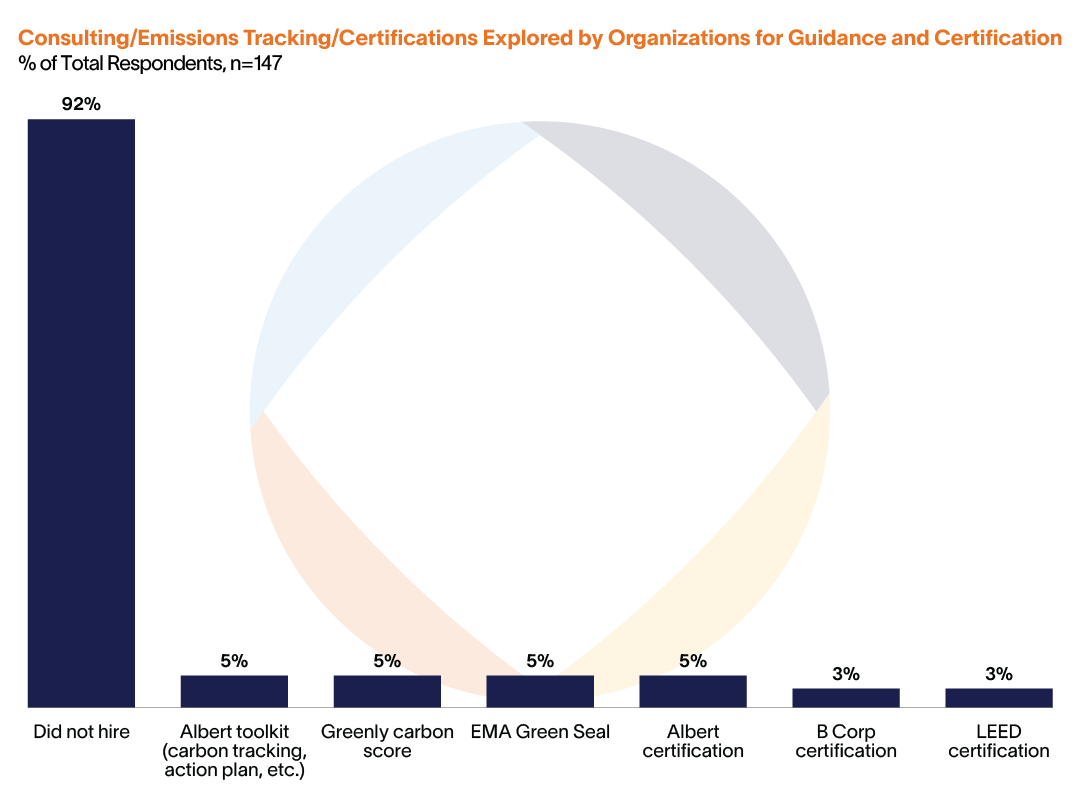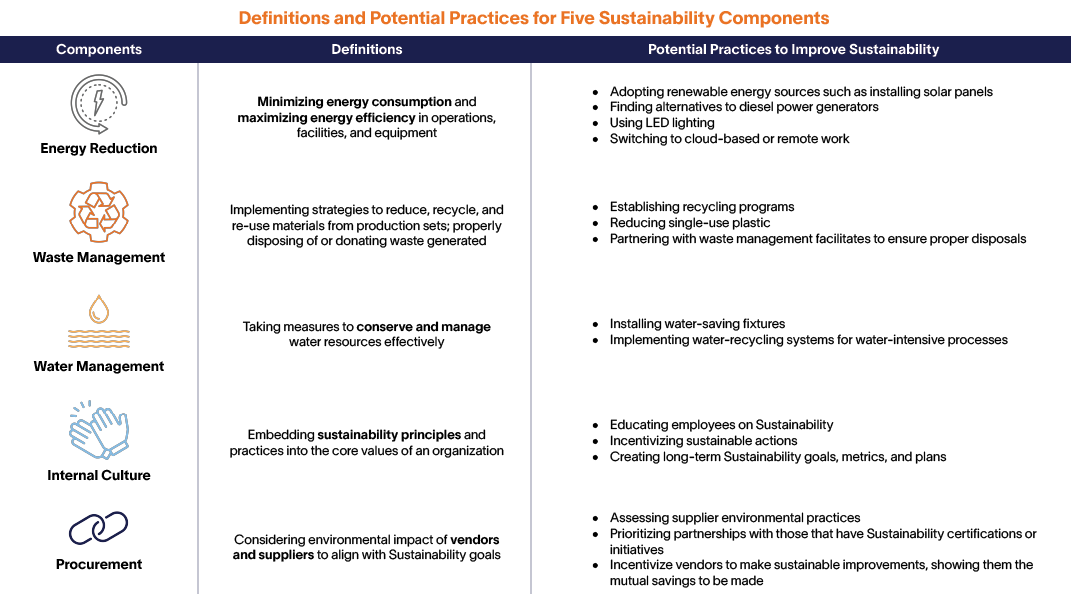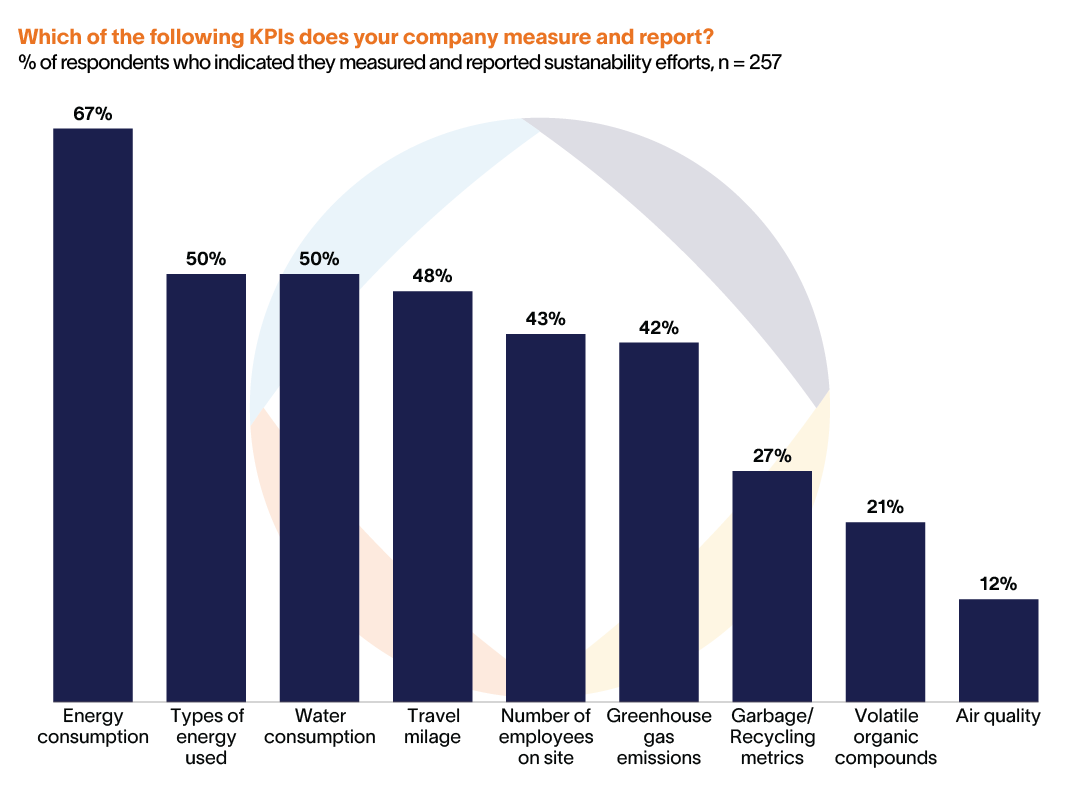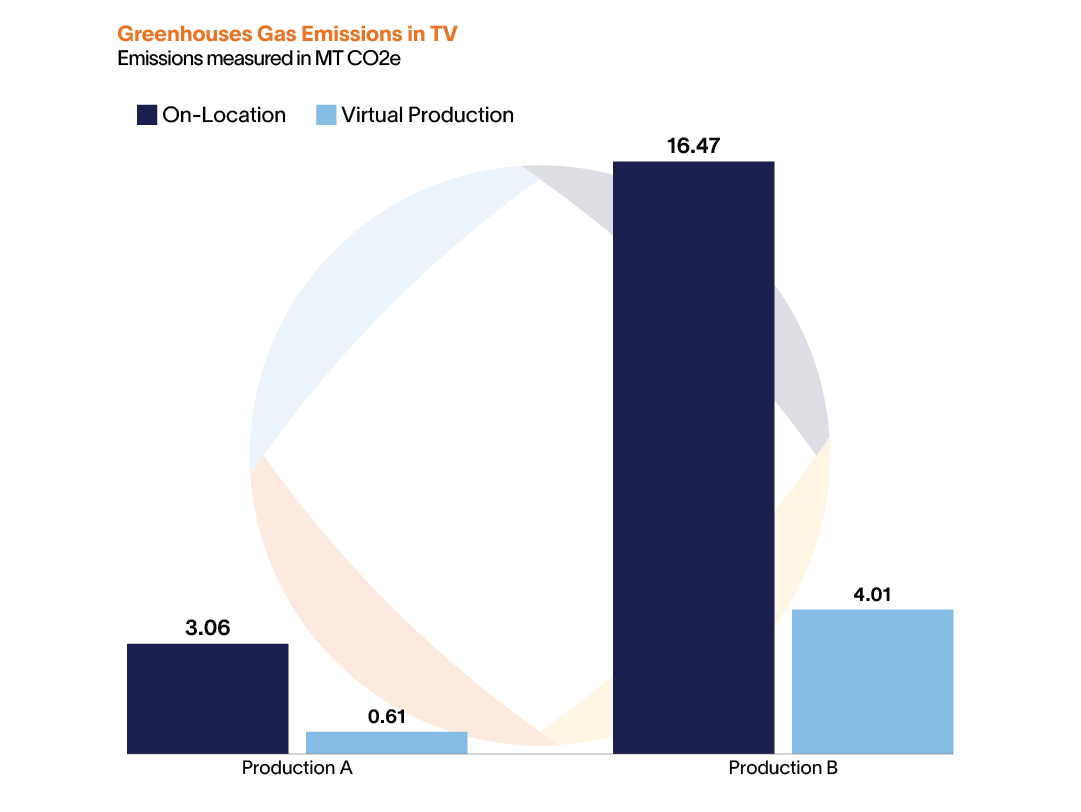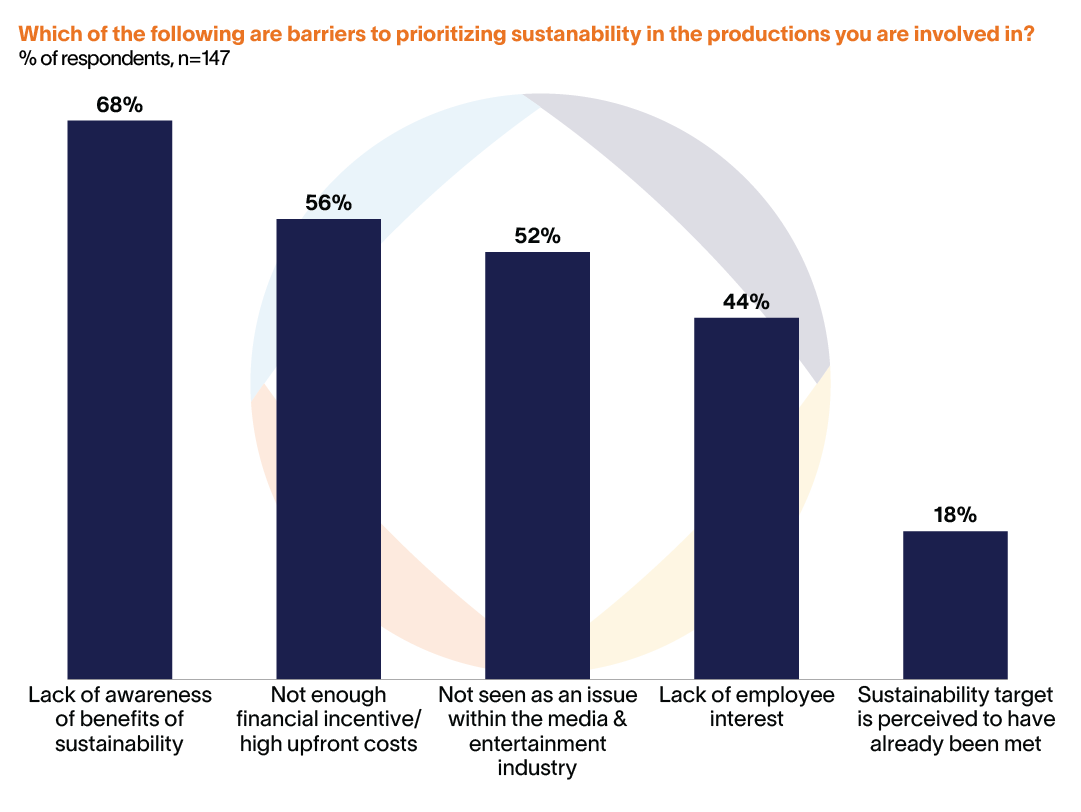There's a major trend where consumers are consuming based on value alignment. Is it going to a company with some stake in sustainability or big oil? That trickles down to the media industry – do I subscribe to this streaming service or not? Do I watch this movie, or do I not?
Director of Sustainability, Major Studio
While Amazon's prestige fantasy series Lord of the Rings: The Rings of Power was filming on location in New Zealand, crew members publicly spoke out against the production's environmental impact, calling attention to the high CO2 emissions and waste created from sets. This outcry and negative press coverage resulted in The Rings of Power hiring a sustainability production team for the following season. Film and television productions have historically had a high environmental impact, but in Hollywood and beyond, media and entertainment (M&E) companies are implementing sustainability programs to respond to public and internal pressure, along with impending government regulations.
As part of our third annual Emerging Media Tech Survey, Altman Solon spoke with over 300 production executives across North America, Europe, and Asia to better understand the state of sustainable development in the M&E sector. Findings show that M&E companies are focusing on curbing emissions, reducing waste, and changing internal culture, with many looking towards emerging media technology – like Virtual Production – to reduce their carbon footprint. Despite these positive measures, there are obstacles to implementation, including a lack of awareness, a fear of greenwashing accusations, and a lack of cross-industry collaboration. As a new generation of consumers takes steps to become more sustainable– and as environmental corporate regulation tightens globally– M&E companies should develop long-term sustainability programs and embrace emerging technology to reduce their carbon footprint and cut costs.
Climate disclosure regulations: a global phenomenon affecting the M&E industry
The other trend driving increased sustainability reporting adoption are the rules and regulations specific to the industry. Reporting might provide tax credits that would push more sustainable operations and reporting.
Executive Director, Major Production Studio
The past decade has seen the rise of worldwide climate disclosure regulations, from the E.U. Corporate Sustainability Reporting Directive (CSRD) to Australia's mandatory climate risk disclosures. The U.S. has long had a patchwork of local and state initiatives to improve the environmental footprint of film productions, from the NYC Film Green sustainability program to required sustainability training for California's Film and TV tax credit program.
The Securities and Exchange Commission (SEC) may soon require all publicly traded companies to disclose direct and indirect emissions from purchased energy. Studio executives will face ambiguity with the SEC’s regulations, specifically as to whether they will need to disclose all indirect emissions that occur in the supply chain, including the purchase of goods, transportation and distribution, business travel, and employee commutes.
In 2023, California passed the Climate Corporate Data Accountability Act, requiring private and public companies with over $1 billion in revenue to disclose comprehensive reports of their Scope 1 and 2 emissions, and the Climate-Related Financial Risk Act, requiring companies operating in California with revenues greater than $500 million to report climate-related financial risks and mitigation strategies biannually. However, recent cuts to California’s fiscal budget will delay the implementation of these two climate disclosure acts.
These new requirements will usher in a major shift in reporting requirements and have the attention of the industry: Nearly 75% of survey respondents are aware of the SEC requirements and are actively preparing for sustainability reporting.
One of the things to decide is: do you include the viewing device in Scope 3? Because without the viewing device, a media company cannot deliver its product. But do you need to be responsible for the lifetime of the device? It gets messy very quickly.
Barbara Lange, CEO, Kibo121, Inc.
Making M&E sustainable: start with energy savings, waste reduction, and shifting company culture
The big metrics are going to be water usage and power. We look at when we are using power, what sources are we using, and where can we reduce power use.
Senior Manager, Major Production Studio
Due in part to public awareness of greenwashing and stricter laws against using “green” imagery without evidence, M&E companies are embarking on concrete initiatives that measurably reduce environmental impact, including energy reduction, waste and water management, integration with internal culture, and procurement.
Over 63% of survey respondents are focused on reducing carbon emissions and power consumption. These decarbonization efforts, which can include transitioning from diesel generators to clean mobile power– including mobile batteries, hydrogen power units, and hybrid systems – for on-location shots, are sophisticated, holistic approaches that can lay the groundwork for long-term sustainability. NBCUniversal, Disney, and Sony Pictures are leading the way in sustainability, with Sony rolling out their “Road to Zero” plan, which aims for net zero carbon emissions by 2050.
Implementing processes is the first step, but understanding their effectiveness is equally important. Of nearly 150 respondents, 88% of respondents measure and report on sustainability efforts. The most measured sustainability KPIs are those that are easy to track, like energy consumption, measured by 67% of respondents, types of energy used (50%), and water consumption (50%).
Virtual production: a potential path towards sustainable production
If VP uses less time in production, there are far-flung impacts. Using one less plastic cup doesn't mean much to us, but if a studio has 20-30 projects going on, it can mean a lot
Co-founder, VP Studio
Virtual production tools, which can enable remote collaboration and reduce reliance on on-location shots, can potentially reduce emissions and waste. In 2022, Sony Pictures compared emissions from filming on-location scenes to scenes shot using virtual production tools for two television series. The analysis considered electricity consumption, fuel generators, vehicles, waste generation, and energy usage from LED virtual production stages. Findings showed that using VP tools generated less than 25% of the emissions compared to traditional on-location methods.
However, these tools are not a panacea. Decarbonization can be achieved through various measures, including sustainable suppliers, waste and water management, and a company culture that centers on sustainability. The NBCU series, The Good Place, took this approach to have a zero-waste set in its final season. Achieving this required hiring a dedicated Sustainability Production Assistant, piloting renewable energies, limiting on-location shots, donating excess food, and reducing single-use plastics on set.
Limited awareness, high costs, and lack of industry focus on sustainability hinder greater adoption
Despite a push towards long-term sustainability, M&E companies face challenges, many of which are internal. More than two-thirds (68%) of respondents cited a lack of awareness around the benefits of sustainability as the top barrier to prioritizing changes. Other top inhibitors to sustainability include cost concerns (56%), a general lack of industry concern (52%), and low employee interest (44%).
The good news is that most of these barriers can be addressed by broadening industry awareness of the benefits of VP solutions, which can help M&E firms reduce their environmental impact, reduce costs, and speed up timelines for productions.
Going from talk to action: prioritizing sustainable development
The first priority is broader education. We are doing what we can to reuse and recycle, but the biggest piece is educating our stakeholders. There is a lot of work that goes into gathering, tracking, and verifying data.
Director of Sustainability, Major Studio
Today, there’s a common perception that sustainability-focused activities don’t have a strong material impact on the company’s bottom line, but that may change in the coming years. As regulations continue to evolve, M&E companies must be ready to react. To counteract barriers to sustainable efforts, we recommend that M&E companies organize and mobilize resources, invest in operations and capabilities to perform audits/assessments, and build out their compliance efforts.
Facing new requirements, M&E companies should identify professionals suitable for managing their sustainability efforts by reorienting existing personnel, hiring external consultants/specialists, or setting up internal organizational units to manage their sustainability efforts.
To strengthen the organizational focus on sustainability, M&E companies may need to develop processes and procedures that drive cultural shifts internally. In recent years, studios have driven cultural shifts when adapting to new privacy policies or regulatory mandates, like GDPR and the California Consumer Privacy Act (CCPA). Organizations can glean learnings from these shifts to navigate the resistance and inertia that will come with transitions around sustainability.
Lastly, M&E organizations must focus on setting up processes to review and monitor the outcomes of their sustainability efforts. There may already be some processes in place for tracking emissions and sustainability data. However, the new SEC disclosure requirements likely will require M&E companies to keep more thorough records. They may benefit from processes to record additional emissions and resource usage data for forthcoming disclosure requirements.



